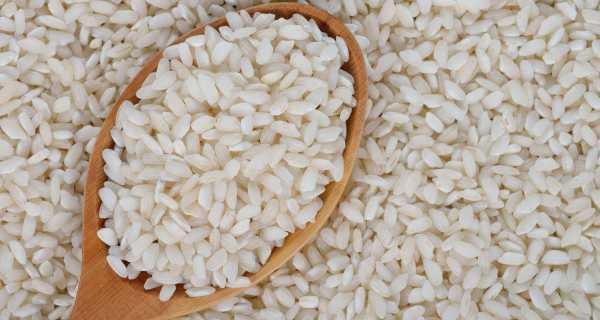Why Can’t I Lose Weight?
Finding Your Trouble Spots
You’re trying hard to lose weight. You’ve changed your eating habits, and you’ve been doing more physical activity than you used to. But a few weeks — or even a few months — have gone by, and the scale isn’t budging. “Why?!” you ask in frustration. “What am I doing wrong?!”
Body weight is regulated mainly by the number of calories consumed and the number of calories burned off. But there are a number of other things that influence weight, and some of them can make it difficult to lose weight. This article explores what some of these are and how to overcome them.
As you make the effort to lose weight, be sure you are aiming for a realistic body weight for you. A starting point for determining this is body-mass index (BMI), a measure of body fat based on height and weight. You can calculate your BMI easily with an online tool such as the one at www.cdc.gov/healthyweight/assessing/bmi. (Note that there’s a separate BMI calculator for children and teens.) Generally, a BMI between 18.5 and 24.9 is considered normal, between 25 and 29.9 is considered overweight, and 30 and higher is considered obese. However, BMI tends to overestimate body fat in athletes and other muscular people and to underestimate it in older people who have lost muscle mass. There is also some evidence that the negative health effects of overweight start at a lower BMI for Asian people.
Keep in mind, too, that people come in different shapes and sizes. You don’t necessarily have to be “thin” to be healthy, but losing some excess fat can improve your health in a number of ways. Talk to your health-care team about your weight-loss goals and about what a healthy weight is for you.
Frequent hypoglycemia
Frequent episodes of hypoglycemia, or low blood glucose, contribute to overweight because of the calories needed to treat hypoglycemia. The general recommendation for treating hypoglycemia is to eat or drink something containing 15 grams of carbohydrate, wait 15 minutes, then check your blood glucose level again with a meter to see if it has risen. Sometimes another 15 grams of carbohydrate is needed, particularly if the blood glucose level was very low when hypoglycemia was detected.
Ideally, foods and drinks used to treat hypoglycemia should contain no fat, because fat slows the rate of stomach emptying and hence the entry of glucose into the bloodstream. Some examples of food and drink that contain 15 grams of carbohydrate and no fat include the following:
- 1/2 cup (4 ounces) fruit juice
- 1/2 cup regular soft drink (not sugar-free)
- 1 dose glucose gel or liquid
- 3–4 glucose tablets
- 1 cup (8 ounces) skim milk
Fifteen grams of carbohydrate contains about 60 calories. If you need 30 grams, that’s 120 calories. And if you consume more than 30 grams of carbohydrate or treat your hypoglycemia with foods such as chocolate bars that also contain fat, it’s easy to take in 200–300 calories. If hypoglycemia occurs and is treated frequently, therefore, the calories — and pounds — can gradually add up.
To prevent weight gain, therefore, it’s important to try to prevent hypoglycemia from occurring in the first place, to refrain from eating or drinking more carbohydrate than necessary when it occurs, and to treat hypoglycemia with foods or drinks that contain only or primarily carbohydrate.
Some common causes of hypoglycemia include taking too much insulin (of any type), taking too high a dose of an oral diabetes medicine, skipping or delaying a meal, increasing the amount of exercise done without decreasing the amount of diabetes medicine taken or increasing the number of calories consumed, and “insulin stacking,” or taking a second dose of insulin before the previous one has finished working.
If you are having frequent hypoglycemia, work with your health-care provider to adjust your diabetes treatment regimen. The potential consequences of frequent hypoglycemia include not just weight gain but also falls, accidents, and, in some people, hypoglycemia unawareness (the loss of early signs and symptoms of hypoglycemia). It’s important to work with your diabetes care team to find the reasons for frequent hypoglycemia and to fix them.
Not enough sleep
Getting less sleep than your body needs can contribute to weight gain and make weight loss difficult. In a study of 68,000 middle-aged women called the Nurses’ Health Study, it was found that women who slept 5 hours per night were 32% more likely to experience major weight gain (defined in the study as about 33 pounds) and 15% more likely to become obese over the course of the 16-year study than those who slept 7 hours per night. Women who slept 6 hours per night were 12% percent more likely to have major weight gain and 6% more likely to become obese. (No significant difference in weight gain was found among the women who reported sleeping 7, 8, or 9 hours or more.) There were no differences between the groups with relation to physical activity and calorie consumption.
Similar results have been found in studies that include both adult men and women, and those studies have also implicated sleeping too much. In one study, people who got only 5–6 hours of sleep a night were 35% more likely to gain 11 pounds over a 6-year period than people who slept 7–8 hours a night. Those who slept 9–10 hours a night were 25% more likely to gain 11 pounds over this period.
There are many reasons people don’t get enough sleep. Having a busy life with many activities and obligations can lead to habitually going to bed late or getting up early. Consuming too much caffeine during the day or too close to bedtime can contribute to poor sleep. In the Nurses’ Health Study, the nurses who slept fewer hours were more likely to have worked overnight shifts.
Sleep apnea, in which breathing repeatedly stops for several seconds at a time during sleep, can contribute to inadequate sleep. Signs and symptoms of sleep apnea include loud snoring during sleep and daytime sleepiness. Because sleep apnea is so common in people with Type 2 diabetes, and because it is associated with so many health problems, some medical professionals now believe that all people with Type 2 diabetes should be screened for it.
Drinking too much alcohol can disrupt sleep. Although many people believe that alcohol makes it easier to fall asleep, in fact, alcohol is a stimulant and can cause you to wake up more frequently during the night.
There are also many ways to increase the amount of sleep you get. One is to adopt a pattern of going to bed and waking up at the same time every day. Another is to make your bedroom as dark and quiet as possible. Reducing caffeine intake, especially late in the day, can help, as can reducing alcohol consumption. Practicing a relaxation technique during the day or just before bedtime can also help. It can be a formal technique, such as meditation, or an informal practice, such as listening to soft music or reading before bed. Getting sleep apnea treated, if you have it, can make a big difference.
Getting regular physical activity can help with sleep quality. Usually, people with insomnia are advised against working out too close to bedtime, because exercise has an arousing effect and can make it harder to fall asleep. However, in a small study reported in 2008 at the annual meeting of the Associated Professional Sleep Societies, study participants with insomnia who performed a session of moderate aerobic activity a few hours before bedtime had increased sleep time and a reduction in the time it took to fall asleep once the lights were out. The study found that moderate aerobic activity, such as brisk walking or biking, worked better than heavy aerobic or strength-training exercises at improving sleep.
If you’re not sure what’s keeping you awake, it may help to keep a sleep diary, in which you record when you went to bed, when you fell asleep, what disrupted your sleep, etc. Sleep diary forms are available online; one example can be found at http://sleepfoundation.org/sleep-diary/SleepDiaryv6.pdf.
Diabetes medicines
Some diabetes medicines are associated with weight gain, and some are not.
Taking the correct dose of injected insulin does not cause weight gain, but taking more than you need, or overeating and taking larger doses of insulin to “cover” the food, can contribute to weight gain.
Insulin not only allows glucose in the blood to enter the cells of the body, but it also helps the body store excess glucose as fat. If your body doesn’t have enough insulin, two things happen: Glucose in the bloodstream is not absorbed and instead leaves the body in the urine, and the body begins to burn more fat than normal for energy. Both of these contribute to weight loss. Once insulin therapy is initiated, the body can once again burn glucose as its preferred source of energy and store any extra calories as fat, so any lost weight is usually gained back. Avoiding weight gain with insulin therapy generally requires eating fewer calories, learning to prevent hypoglycemia by matching insulin doses to the body’s needs, and getting regular exercise.
Oral diabetes drugs that cause the pancreas to release more insulin can also contribute to weight gain in the same way as injected insulin can. Among those that have this effect are drugs in the sulfonylurea class, such as glimepiride (Amaryl), glipizide (Glucotrol), and glyburide (DiaBeta, Glynase, and Micronase), as well as combination pills that contain these drugs.
Two other oral diabetes drugs that tend to cause weight gain are pioglitazone (Actos) and rosiglitazone (Avandia). These medicines work by reducing insulin resistance; reduced insulin resistance means that insulin is more efficient at moving blood glucose into cells, where it is stored as energy. The weight gain caused by pioglitazone and rosiglitazone is usually the result of both fluid retention and increased fat storage.
An oral diabetes drug that typically does not cause weight gain and in some cases contributes to weight loss is metformin (Glucophage and other brands). Metformin works by preventing the liver from releasing glucose into the bloodstream when it’s not needed and by reducing insulin resistance.
DPP-4 inhibitors such as sitagliptin (Januvia), saxagliptin (Onglyza), linagliptin (Tradjenta), and alogliptin (Nesina), also oral drugs for Type 2 diabetes, are associated with neither weight gain nor weight loss.
Exenatide (Byetta and Bydureon), liraglutide (Victoza), albiglutide (Tanzeum), and dulaglutide (Trulicity), injectable medicines that are approved for Type 2 diabetes, also do not tend to cause weight gain. These drugs signal the pancreas to produce the right amount of insulin when you need it, stops the liver from releasing glucose into the bloodstream when it’s not needed, slows stomach emptying, and may reduce appetite, possibly leading to eating less and to weight loss.
Medicines in the SGLT2 inhibitor class, such as canagliflozin (Invokana), dapagliflozin (Farxiga), and empagliflozin (Jardiance) may result in weight loss.
Another medicine that is not associated with weight gain is pramlintide (Symlin). Pramlintide is an injectable drug that is taken along with insulin before meals. It is approved for people with either Type 1 or Type 2 diabetes who take insulin before meals. Pramlintide stops the liver from releasing glucose into the bloodstream when it’s not needed, slows stomach emptying, and may decrease appetite.
Not all diabetes drugs that can cause weight gain have that effect on everyone. But if you suspect that a medicine you are taking is hindering your weight-loss efforts, talk with your doctor. Do not stop taking a medicine on your own. There may be a similar drug that is appropriate for you that is less likely to have weight-related side effects.
Underactive thyroid
Having an underactive thyroid can make losing weight difficult. The thyroid is a gland in the neck that secretes hormones that regulate the body’s metabolic rate. It is stimulated to produce these hormones by another hormone called thyroid-stimulating hormone, or TSH, which is produced in the pituitary gland. To see how well the thyroid is functioning, doctors measure the TSH level in the blood. A TSH value that is too low may indicate an overactive thyroid, and a value that is too high may reflect an underactive thyroid.
Signs and symptoms of underactive thyroid, or hypothyroidism, include fatigue, weakness, weight gain, constipation, brittle nails, cold intolerance, and memory problems. Once the condition is treated, by replacing the deficient thyroid hormone, weight loss is possible with lifestyle changes.
Eating out
By now we all know that many restaurants serve overly large portions, but refraining from eating the whole thing is still difficult for many people. Several short-term studies conducted by nutrition researcher Barbara J. Rolls, PhD, and colleagues have shown that people generally eat more when offered larger portions of food. However, the people who consumed larger portions of macaroni and cheese or larger sandwiches in Rolls’s experiments reported similar levels of hunger and fullness after eating as the people who had eaten smaller portions.
It seems that being served large portions over time causes “portion distortion.” In other words, a person gets used to the larger portions and begins to view them as normal. This can make it difficult to feel satisfied with a smaller, but calorically adequate, portion.
If you dine out frequently, therefore, you may be taking in more calories than you realize. Limiting how often you eat out, if possible, can help with weight loss. It can also help to periodically weigh and measure portions of food at home to train your eye to recognize appropriate portion sizes. Knowing how much you want to eat ahead of time, and having a mental image of the portion size, can help you control calories at restaurants. The information in “Estimating Portions” may also help you assess portion sizes. Once you’ve figured out how much of your restaurant portion you want to eat, put the extra food aside to take home and enjoy later.
Barbara Rolls’s book The Volumetrics Eating Plan offers another approach to calorie control if you enjoy eating large portions. She advocates eating more foods that have low energy density, or few calories per ounce. These tend to be foods that have a high water content, such as fruits, vegetables, nonfat or low-fat dairy products, broth-based soups, grains, beans, and legumes. The benefit to eating more of these foods is that larger portions will fill you up without providing a lot of calories.
Not enough physical activity
Increasing the amount of physical activity you do can get stalled weight loss going again. The American Heart Association recommends that people with Type 2 diabetes perform a minimum of 150 minutes (2 1/2 hours) of moderate-intensity physical activity each week or at least 90 minutes of vigorous activity a week. Doing resistance-training exercises three times per week is also encouraged.
Keep in mind that if you don’t currently do this much, you will need to build up to it gradually. It’s also a good idea to get your doctor’s OK before increasing the amount or intensity of physical activity you do. Certain activities may not be advised for people who have diabetes complications such as eye or kidney disease. Also, because physical activity usually lowers blood glucose, you may need to take steps to prevent hypoglycemia while exercising. Some of the ways to do this include cutting back on insulin or oral medicines before exercising, having a snack before or during exercise, or changing your meal schedule to accommodate your exercise schedule. Checking your blood glucose before, during, and after physical activity will help you determine which of these steps may be most effective.
Too much alcohol
Large studies done in Great Britain and Finland have found that heavy alcohol intake is associated with weight gain and obesity in men. Given that alcoholic beverages are often high in calories, this news is perhaps not so surprising.
A serving of alcohol is considered to be one 12-ounce beer, 5 ounces of wine (excluding dessert wine), or 1 1/2 ounces of 80-proof distilled spirits such as gin, whiskey, vodka, or rum. Each of these servings contains about 14 grams of pure alcohol and roughly 100–200 calories. Any caloric mixers, such as fruit or vegetable juices, soft drinks, cream, coconut milk, or sugar, raise the calorie count. The American Diabetes Association recommends that those who choose to drink alcoholic beverages limit themselves to one alcoholic drink (or one serving) a day for women and up to two alcoholic drinks (or two servings) a day for men.
To minimize calories from alcoholic beverages, consider drinking light beer in place of regular beer and using diet soda, seltzer, or club soda in place of caloric mixers in mixed drinks. Limiting quantities to one drink per day for women and two drinks per day for men — or less — will help with weight control.
Because alcohol can cause hypoglycemia, particularly when consumed on an empty stomach, it’s best to drink alcohol with a meal. (Cutting back on food calories to accommodate alcohol calories is not recommended by the American Diabetes Assocation because of the risk of hypoglycemia.) Alcohol is processed in the liver, which also plays an important role in regulating blood glucose level. When the liver is processing alcohol, it cannot release glucose into the bloodstream when it is needed, and the blood glucose level can drop too low.
Before drinking alcohol, talk with your health-care provider to see if it’s safe for you. Some medicines are not safe to take with alcohol, and alcohol can worsen some diabetes complications, including peripheral neuropathy. If you feel that you cannot control the quantity of alcohol you consume, it’s best not to drink at all.
Reaching a plateau
When you first cut back on calories and started getting more physical activity, you most likely lost weight. Over time, however, your body adjusts to a consistently lower energy intake, and weight loss slows or stops.
Also, if you dramatically cut your calorie intake when you were diagnosed with diabetes, you may be finding it difficult to maintain such a low intake over the long term, and even a small increase in daily calories can lead to regaining some weight.
A plateau may be a good time to reassess your goals and your action plan for reaching them. For example, you may decide that you’re willing and able to increase the intensity or amount of physical activity you do. Or you may decide that maintaining the weight you’ve already lost for the next several months is a more realistic goal than losing more weight right away. Meeting with a registered dietitian or certified diabetes educator may be helpful for moving forward at this stage.
One step at a time
Many possibilities have been presented in this article, and not all of them will apply to everyone. To avoid getting overwhelmed, think carefully about which of these possibilities is (or are) most likely to be affecting you, and focus on actions you can — and are willing to — take. Then come up with a plan for how you’ll carry out those actions. In some cases, you may need the help of your diabetes care providers to diagnose a problem or come up with a solution, so making an appointment with one of these professionals may be the first step in your action plan. Whatever the plan, break it into manageable chunks, take time to evaluate the effectiveness of each step before you go on to the next, and give yourself a pat on the back for making the effort to control your diabetes and improve your health.
-
Superstar Rajinikanth’s 6 super dance moves to lose weight
P.S.-
-
13 weight loss Yoga poses that work!
-
Revealed — HIIT burns most calories
-
Eating sweet potatoes can help you lose weight!
-
Want to lose weight? Time to switch to apple-cinnamon water
-
How to stick to your weight loss goals when on a vacation
- DON'T MISS
- 7 health conditions that are responsible for making you fat
- Is it possible to lose weight without exercising?
- 5 tips to burn belly fat
- 6 home remedies for weight loss
- Slimming machines — Do they work?
- Lose belly fat quickly with these 7 kitchen ingredients
- Lose weight with kapalbhati pranayama
- Weight Loss
- Can aerobics help you lose weight?
- Don’t Lose Out, Work Out Book Review: Fitness fundas for the aam aadmi




